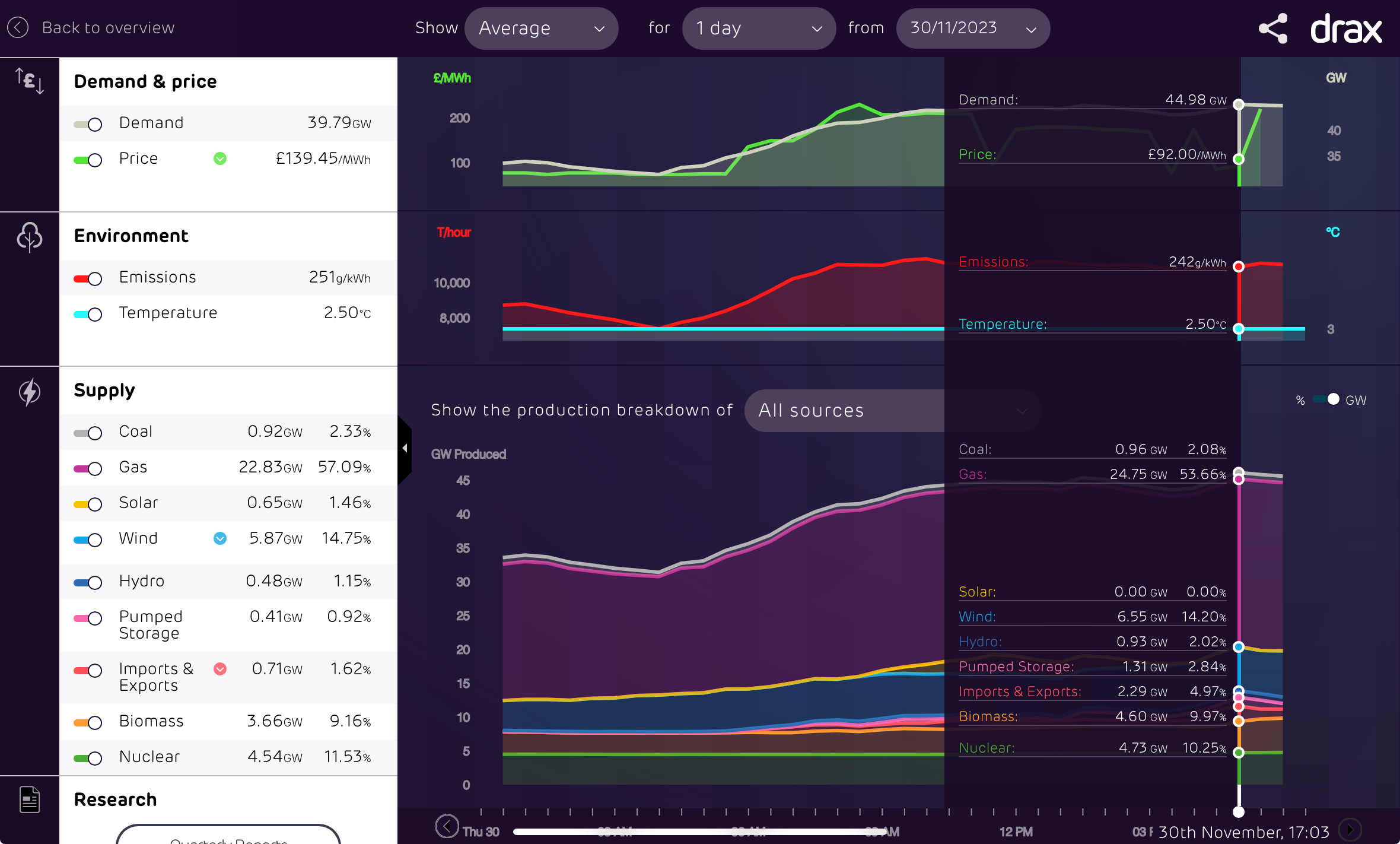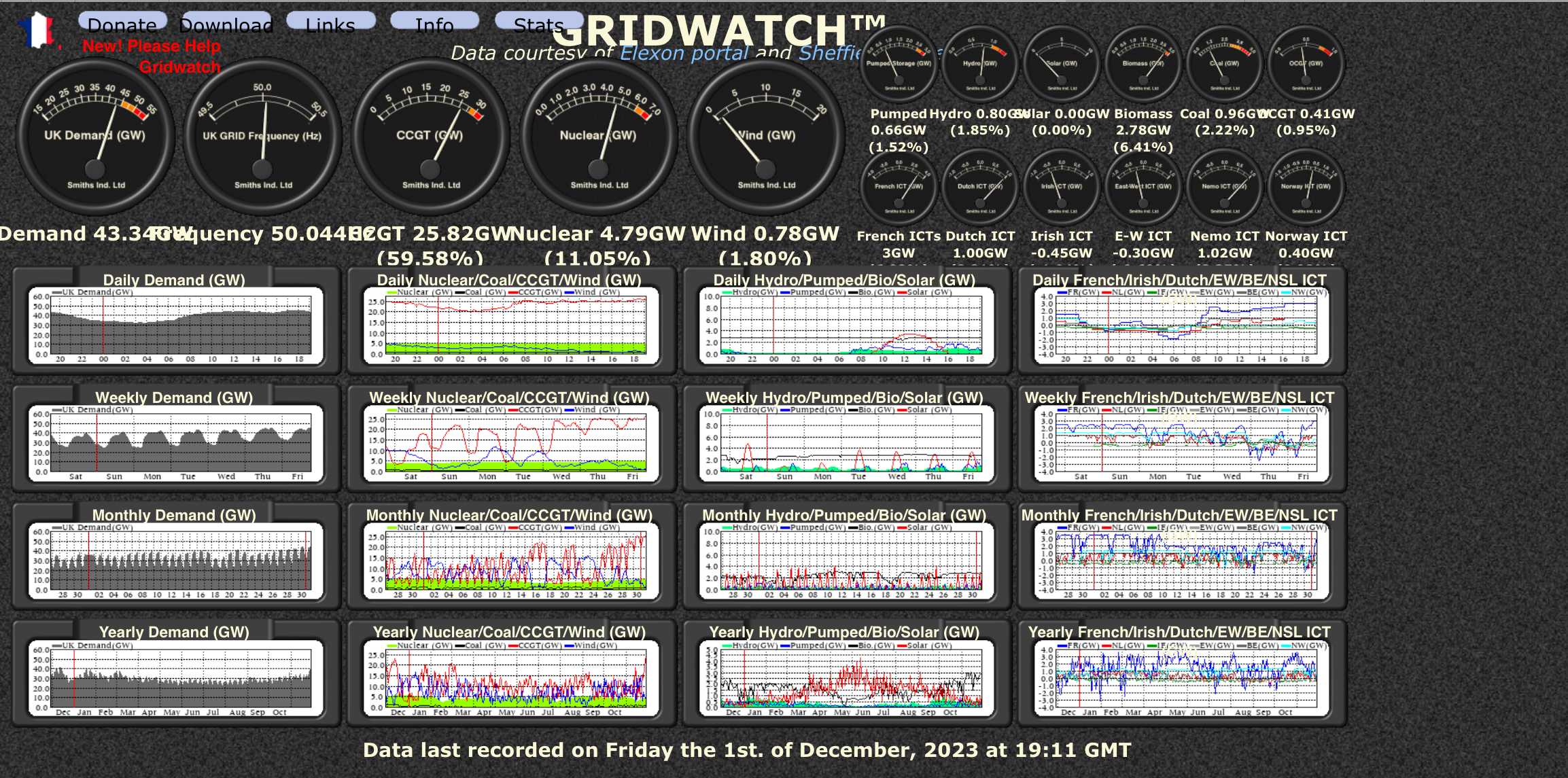We’d like to remind Forumites to please avoid political debate on the Forum.
This is to keep it a safe and useful space for MoneySaving discussions. Threads that are – or become – political in nature may be removed in line with the Forum’s rules. Thank you for your understanding.
The Alternative Green Energy Thread
Comments
-
Haters gonna hate - however the UK gov auction design effectively gave the developers a cheap/free option - bid low and if the costs don't work out simply decline to build (if costs had gone the other way the developers would have minted the profits).
The other reason wind is so expensive to build out now is because of its success - due to gas price volatility and the green agenda everyone wants to build wind right now and there is not the capacity hence prices getting bid up, a bit like the bubble we saw in EVs 18 months ago. When more supply comes on line prices should moderate again.
And the final nail in the coffin is the big rise in long term interest rates. Wind projects with a guaranteed return of 4% make sense when you can borrow money long term at 3% but don't when it costs 5% to borrow over 30 years.
Nuclear is of course equally or worse impacted by high borrowing costs as it is even more capital intensive and longer term. Low capital higher operating costs technologies win in a higher interest rate scenario.I think....2 -
It isn't just demand in the supply chain that is impacting construction costs. 2 years of high inflation following nearly a decade of low inflation means that all the financial models built for the auctions have now become incorrect. This isn't due to errors by the bidding companies rather than an effect of (suddenly high) inflation. And it will apply to all generators, it is just that no-one is really talking about building fossil fuel generators atm, or if they are, there are also other elements of the model that are also being squeezed (CO2 taxes, fuel costs).michaels said:Haters gonna hate - however the UK gov auction design effectively gave the developers a cheap/free option - bid low and if the costs don't work out simply decline to build (if costs had gone the other way the developers would have minted the profits).
The other reason wind is so expensive to build out now is because of its success - due to gas price volatility and the green agenda everyone wants to build wind right now and there is not the capacity hence prices getting bid up, a bit like the bubble we saw in EVs 18 months ago. When more supply comes on line prices should moderate again.
And the final nail in the coffin is the big rise in long term interest rates. Wind projects with a guaranteed return of 4% make sense when you can borrow money long term at 3% but don't when it costs 5% to borrow over 30 years.
Nuclear is of course equally or worse impacted by high borrowing costs as it is even more capital intensive and longer term. Low capital higher operating costs technologies win in a higher interest rate scenario.4.3kW PV, 3.6kW inverter. Octopus Agile import, gas Tracker. Zoe. Ripple x 3. Cheshire2 -
I noticed that at peak demand today around 5pm we were only getting around 2.3GW from interconnectors (around half what we typically get at this time of day) and the consequence was that gas was contributing around 25GW which I believe is higher than peak gas generation in the cold spell last December or at any time since. Earlier in the day it had reached 25.3GW. Is this a record for gas generation?
 https://www.electricinsights.co.uk/#/dashboard?start=2023-11-30&&_k=d596ez
https://www.electricinsights.co.uk/#/dashboard?start=2023-11-30&&_k=d596ez
Are we too reliant on interconnectors? Over the previous 7 days when demand has averaged 33GW we have averaged 3.96 GW of imports but today (to date) with demand averaging almost 40GW we have only drawn 0.74GW on average from our continental friends. How much we import is I believe primarily a function of price and perhaps our gas generation is simply cheaper than our continental neighbours’ generation today. If however we do get close to our generation capacity and Europe is the same can we rely, long term, on their cooperation?
 Northern Lincolnshire. 7.8 kWp system, (4.2 kw west facing panels , 3.6 kw east facing), Solis inverters, Solar IBoost water heater, Mitsubishi SRK35ZS-S and SRK20ZS-S Wall Mounted Inverter Heat Pumps, ex Nissan Leaf owner)1
Northern Lincolnshire. 7.8 kWp system, (4.2 kw west facing panels , 3.6 kw east facing), Solis inverters, Solar IBoost water heater, Mitsubishi SRK35ZS-S and SRK20ZS-S Wall Mounted Inverter Heat Pumps, ex Nissan Leaf owner)1 -
UK more reliant on gas as renewable output plunges during cold snap
The UK will be reliant on gas for up to two-thirds of its electricity this weekend as global policymakers at COP28 are reminded of the importance of fossil fuels.
Freezing temperatures, resulting in a cold snap across the country, has seen demand soar, while outputs from windfarms have plunged.
The Chief Executive of Nation Gas says he expects demand from gas-fired power stations to be "maxed out" from today and throughout the weekend.
Jon Butterworth says: “It’s really important they recognise that although we’ve got to decarbonize, energy security is also vital. And when you’re in a world of interruptible renewable energy, our security is massively important.
Around lunchtime today gas generation hit 25.5GW. Imports are now stepping up to the plate, currently providing 5.2 GW and gas is down to 25GW. I’m currently using 5w.
Northern Lincolnshire. 7.8 kWp system, (4.2 kw west facing panels , 3.6 kw east facing), Solis inverters, Solar IBoost water heater, Mitsubishi SRK35ZS-S and SRK20ZS-S Wall Mounted Inverter Heat Pumps, ex Nissan Leaf owner)0 -
JKenH said:Freezing temperatures, resulting in a cold snap across the country, has seen demand soar, while outputs from windfarms have plunged.Yet tides still rise and fall, tidal streams still flow, and deep rocks are still hot.Maybe we need to spread our renewables eggs between more technology baskets?N. Hampshire, he/him. Octopus Intelligent Go elec & Tracker gas / Vodafone BB / iD mobile. Ripple Kirk Hill Coop member.Ofgem cap table, Ofgem cap explainer. Economy 7 cap explainer. Gas vs E7 vs peak elec heating costs, Best kettle!
2.72kWp PV facing SSW installed Jan 2012. 11 x 247w panels, 3.6kw inverter. 34 MWh generated, long-term average 2.6 Os.1 -
Or maybe it is fine to use gas for a smaller and smaller percentage of generation when renewables are not available. There seems to be some narrative that because (currently) renewables can't do 100% they are therefore useless in reducing CO2 emissions.I think....0
-
I'd argue that it's really important to start viewing our energy usage in a completely new and radical way by matching demand to supply as far as we can and not the other way round. We've only just started on this journey but the signs are good and those who understand the issue and are also able to be flexible in their consumption are embracing this. And of course as @QrizB suggests massively increase the diversity of RE sources would help a lot too.Jon Butterworth says: “It’s really important they recognise that although we’ve got to decarbonize, energy security is also vital. And when you’re in a world of interruptible renewable energy, our security is massively important.
I suppose what's really great about this statement is that only a few years ago everyone assumed we need coal and gas generated electricity. And now we've got people having to make a claim for the case of !!!!!!. Perhaps we are on a (slightly) positive trajectory after all.Install 28th Nov 15, 3.3kW, (11x300LG), SolarEdge, SW. W Yorks.
Install 2: Sept 19, 600W SSE
Solax 6.3kWh battery0 -
No, the narrative is that we can do 100% renewables and that is flawed. Renewables do a great job of reducing CO2 over the year as a whole even if they can’t do 100% of our generation but the last few % are really difficult to achieve and we need to be realistic about how we deal with those few %. Do we retain sufficient gas capacity to deal with these shortfalls or is there a more viable alternative? If so, what? Simply building out more renewables will not solve the problem. There are times when renewables account for as little as 1% of our generation yet at other times they produce more than we can consume. Increasing wind and solar capacity will do little to assist with the troughs but the huge surpluses that further expansion will produce make them uneconomic without subsidy.michaels said:Or maybe it is fine to use gas for a smaller and smaller percentage of generation when renewables are not available. There seems to be some narrative that because (currently) renewables can't do 100% they are therefore useless in reducing CO2 emissions.
What we really need is a dispatchable alternative to gas. As I write gas is currently providing 26 GW of dispatchable generation - there simply is no alternative at the moment.Edit: I have just looked at Gridwatch and wind is currently providing 0.78GW and of course solar 0 GW(MW/kW take your pick). And that is roughly 3 times what it was producing at its lowest this year. I really would like to see someone do the sums and actually tell us just how much renewable capacity and what mix we need to be 100% carbon free and still maintain the generation we need to power our homes and industry. Northern Lincolnshire. 7.8 kWp system, (4.2 kw west facing panels , 3.6 kw east facing), Solis inverters, Solar IBoost water heater, Mitsubishi SRK35ZS-S and SRK20ZS-S Wall Mounted Inverter Heat Pumps, ex Nissan Leaf owner)0
Northern Lincolnshire. 7.8 kWp system, (4.2 kw west facing panels , 3.6 kw east facing), Solis inverters, Solar IBoost water heater, Mitsubishi SRK35ZS-S and SRK20ZS-S Wall Mounted Inverter Heat Pumps, ex Nissan Leaf owner)0 -
We know it is possible but expensive to use excess RE to produce hydrogen than can be stored and burned when RE generation is low. Massively expensive but perhaps cheaper than frying the planet?I think....0
-
We should have been building more storage, of all durations, long ago. But there's no way dim-witted public school politicians are going to understand that.1
Confirm your email address to Create Threads and Reply

Categories
- All Categories
- 352.3K Banking & Borrowing
- 253.7K Reduce Debt & Boost Income
- 454.4K Spending & Discounts
- 245.4K Work, Benefits & Business
- 601.1K Mortgages, Homes & Bills
- 177.6K Life & Family
- 259.2K Travel & Transport
- 1.5M Hobbies & Leisure
- 16K Discuss & Feedback
- 37.7K Read-Only Boards





